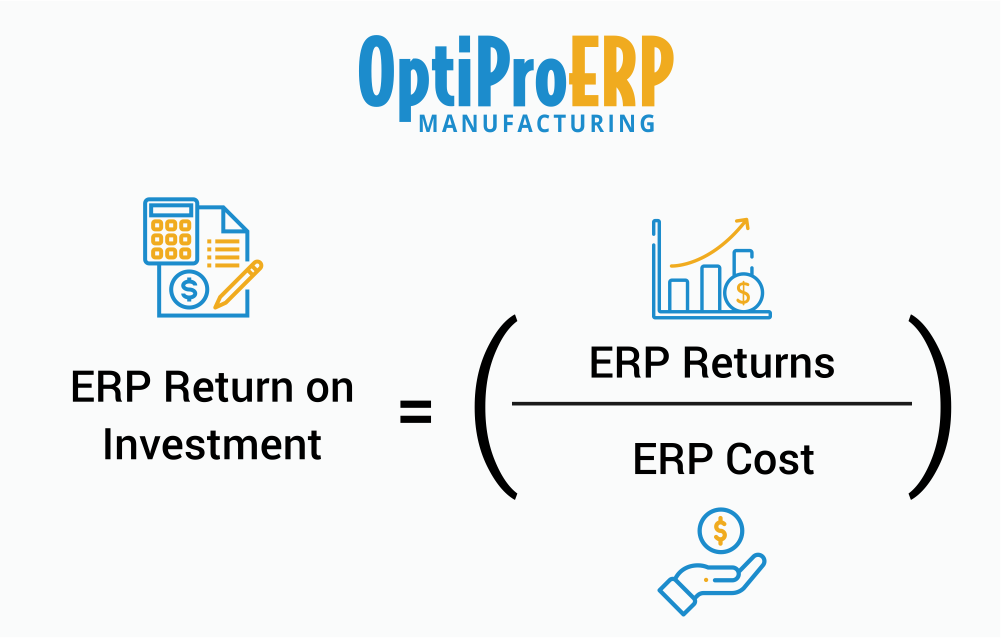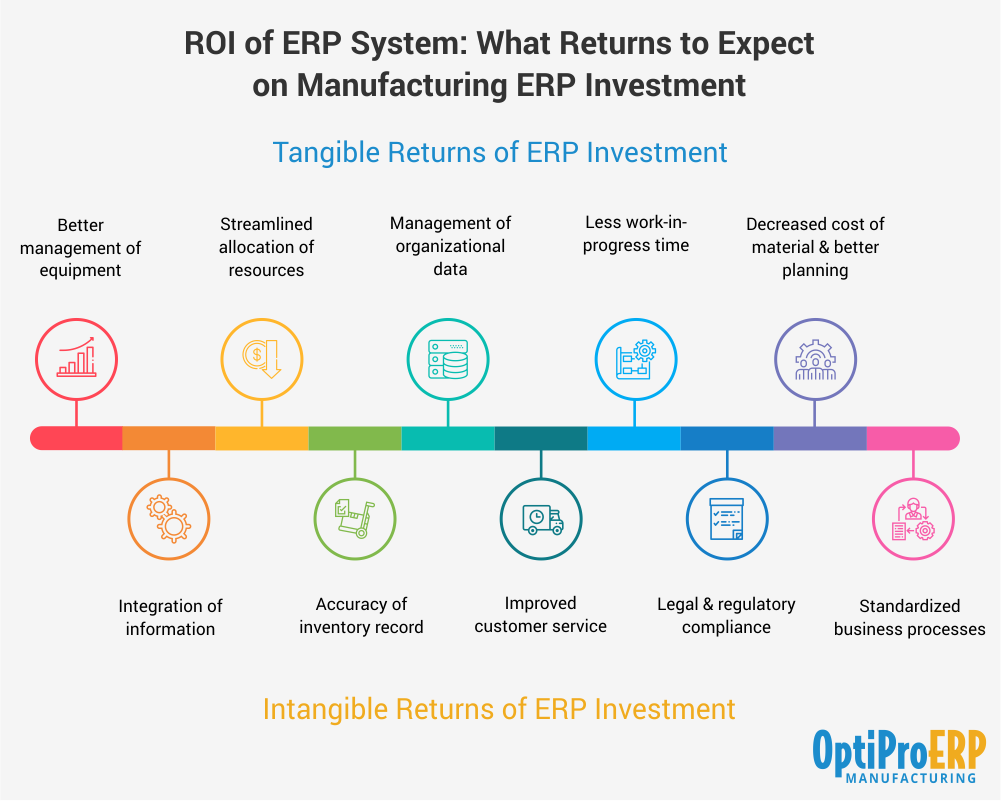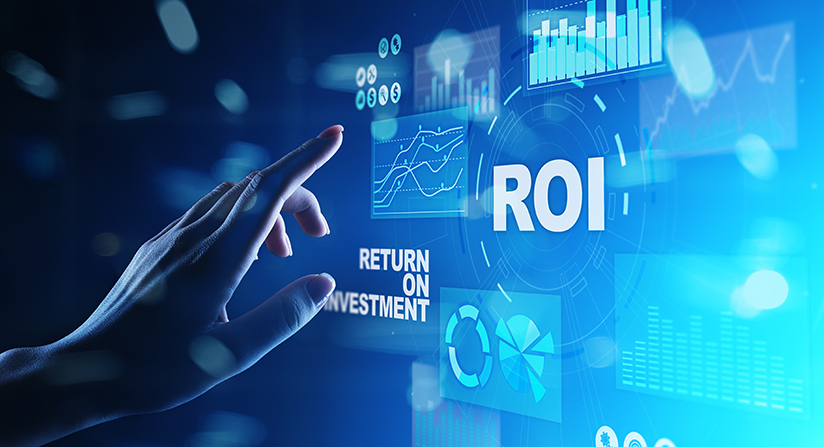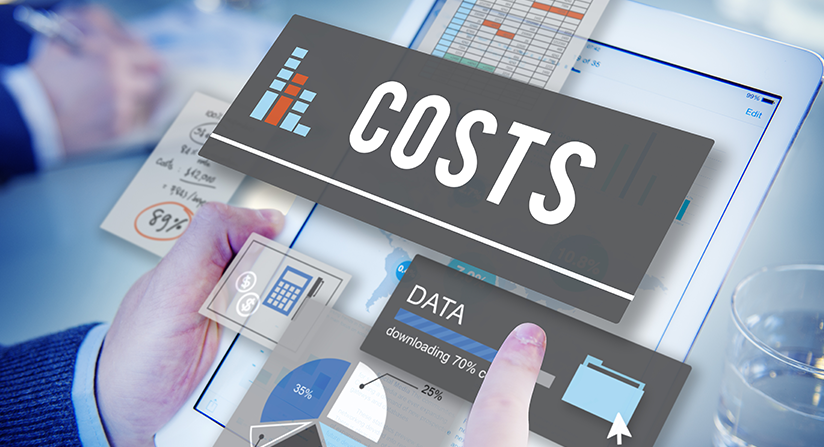The decision to implement or upgrade an ERP solution can help take your business to the next level.
A modern ERP solution reduces operating costs, increases productivity, and offers standard features that automate business tasks and save time.
Investing an extensive amount of money in ERP is a big deal and it’s important to justify this large expenditure. The total cost of licensing, implementation, training, and maintenance all put together is the TCO (Total Cost of Ownership). The estimation of TCO is calculated over a period of years (sometimes 5 to 10).
Another way of justifying the Total Cost of Ownership for ERP implementation is quantifying the benefits of the newly implemented ERP system by estimating the ROI of an ERP implementation.
But how do you calculate ERP ROI?
ROI is determined by taking the expected cost of ERP and comparing it to the expected benefits (direct and indirect savings) of implementing the ERP system.
ROI is calculated by adding the anticipated returns from ERP and then dividing the resulting amount by the TCO of ERP, the resulting quotient is ERP ROI. The larger the quotient, the better it is for business.

Calculating the ROI of ERP is a daunting task – it’s fraught with challenges and misconceptions. That’s why we focus on the costs which can deliver the quickest returns on investment.
Let’s take a look at the main points on the importance of calculating the ROI of ERP implementation.
- It justifies your ERP implementation process from a financial point of view
- ROI can be one of the most important criteria for selecting the right ERP for your company
- ROI lets you measure the expected ERP benefits that can be achieved after the implementation process
ROI is an important part of the ERP selection process as it gives you clarity about where your company will be after 5 or 10 years, what will be the rate of productivity, and how can it improve your business in the short and long run.
How can you determine the ROI of an ERP system?
Here are some things to consider that can help you figure out ROI:
Organize your data for better ROI
Evaluating, selecting, and implementing ERP involves gathering a large amount of business data. Bringing this information together can be an overwhelming task. People from every department should give their input objectively to help counter any bias and ensure consistency.
It is better to focus on people and processes, not technology
You can achieve increased ROI by not getting into the technical aspects of an ERP system. You should understand how it will improve your processes and what savings those improvements will provide over time. ROI will depend on how well you manage business process reengineering and organizational change management.
Don’t underestimate the time and effort required for your ERP implementation
Setting realistic expectations and forecasting ROI benefits is important. Estimate the project’s time, cost, and effort by getting the advice of an expert, someone other than the ERP vendor as they may not be entirely realistic for their benefit.
Forecasting ERP cost
ERP costs such as licensing and hardware can be easily determined. Besides these costs, other expenses need to be considered and calculated. They include SaaS subscription, consultancy, maintenance, and user costs.
Below are some questions to consider:
- How do you plan to deploy your solution: Cloud? On-Premise?
- How many users do you need?
- What do you need to run your business?
- What are your implementation and training needs?
You may require a significant amount of time to calculate these costs. Here is the list of costs that can be forecasted before investing:
4.1 Out-of-the-box system price
Many business owners assume that this ERP cost is easy to calculate as it’s the amount taken from the vendor’s quote. However, that depends on the modules and deployment options your company requires.
- License fees – on-premise vs SaaS
On-premise ERP software is hosted on the local servers in your organization. In this situation, a one-time licensing fee is required. With an on-premise deployment, businesses also need to update their servers to ensure the software can function now and into the future, so any expense that entails should be included. Licenses are “repurchased” every five years so that is also a cost to be considered if the plan is to keep the system for longer.
SaaS of Cloud ERP is hosted remotely on a third-party server and can be accessed via the internet. You have to pay a monthly subscription fee, until the date you no longer use the system. There is no fee for updates to the ERP system.
4.2 Consultancy costs and vendor implementation fees
If you use a consultant to drive the implementation process you will need to factor in their fee. To calculate this expense, it’s important to define the list of activities they will perform and the timeframe they will be needed to establish expectations and avoid future issues and costs.
A range of implementation services offered by ERP consultants includes data migration, project management, system customization, etc. Some consultants ask for surcharges for these services so make sure you have clarity on how their fees work.
4.3 Maintenance cost
Your servers and machines should meet at least the minimum specifications of the vendor. Getting your equipment updated to accommodate the ERP implementation may require costs you need to factor into your ROI calculations.
Maintenance fees need to also be considered including IT labor, additional server expense, and other departmental costs. And the ERP vendor may have an annual maintenance fee that will allow you access to new technologies to help you maintain a competitive edge.
4.4 User cost
It is crucial to train your employees on the new ERP system to ensures it is efficiently used. Training is a time-consuming process and that cost needs to be calculated. It will depend upon many factors including how many people need to be trained and how challenging it is to learn the processes and whether you need to hire additional resources to help with the training or managers to help streamline new production processes.
It is important to manage costs as per the budget and it should never exceed the amount you have planned or ROI can go down.
Determining the ERP benefits – tangible and intangible
Installation of ERP requires time, effort, and money. Once you get it implemented, the software starts gathering raw business data and transforms it into information that is easily understandable and readable.
To calculate ERP return in investment, data should be given a dollar value. It helps in calculating increased levels of efficiency in business processes.
This infographic lists the tangible and intangible returns to expect from ERP investment:

In addition to this, you must know the answers to these questions:
- How long will I use this ERP system in the future?
- What are my expected monetary benefits after using it?
It is difficult to calculate tangible benefits in monetary terms as these may fluctuate. However, to ensure ROI, it’s a must to quantify all the business parameters.
Quantify your benefits
As you would expect, more standard selections, versus more customized options, impact your ERP cost. Your ability to choose what is best for your business success today, combined with the confidence your solution can scale to support your continued growth….is priceless.
The key to business profitability is to change and enhance business processes and fill the gaps to improve efficiency and overall productivity.
The first step of calculating ERP ROI is, to sum up the total cost of ownership (TCO) of ERP software over a specified period, as we mentioned above.
The second step is to guesstimate the anticipated benefits over a certain period. To put down these benefits into figures, look at benefits that occur from the reduction of operating costs, inventory costs, labor costs, and improved production (as these points directly affect the profit and loss of the company).
Performing ROI analysis for an ERP system is quite intimidating especially when it comes to calculating unquantifiable figures. ROI measurement helps you forecast the future business plan and increase the chances of a successful ERP project completion.
Some of the immeasurable returns you can expect from the ROI of an ERP investment are:
- Improves staff retention
- Effectively fixes errors
- Single source of truth on a centralized platform
- Increased visibility allows for quick decision-making
If you are pondering over the question – how long does it take to see a Return on an ERP investment and how can it help your organization grow, please contact us.
Follow Us




